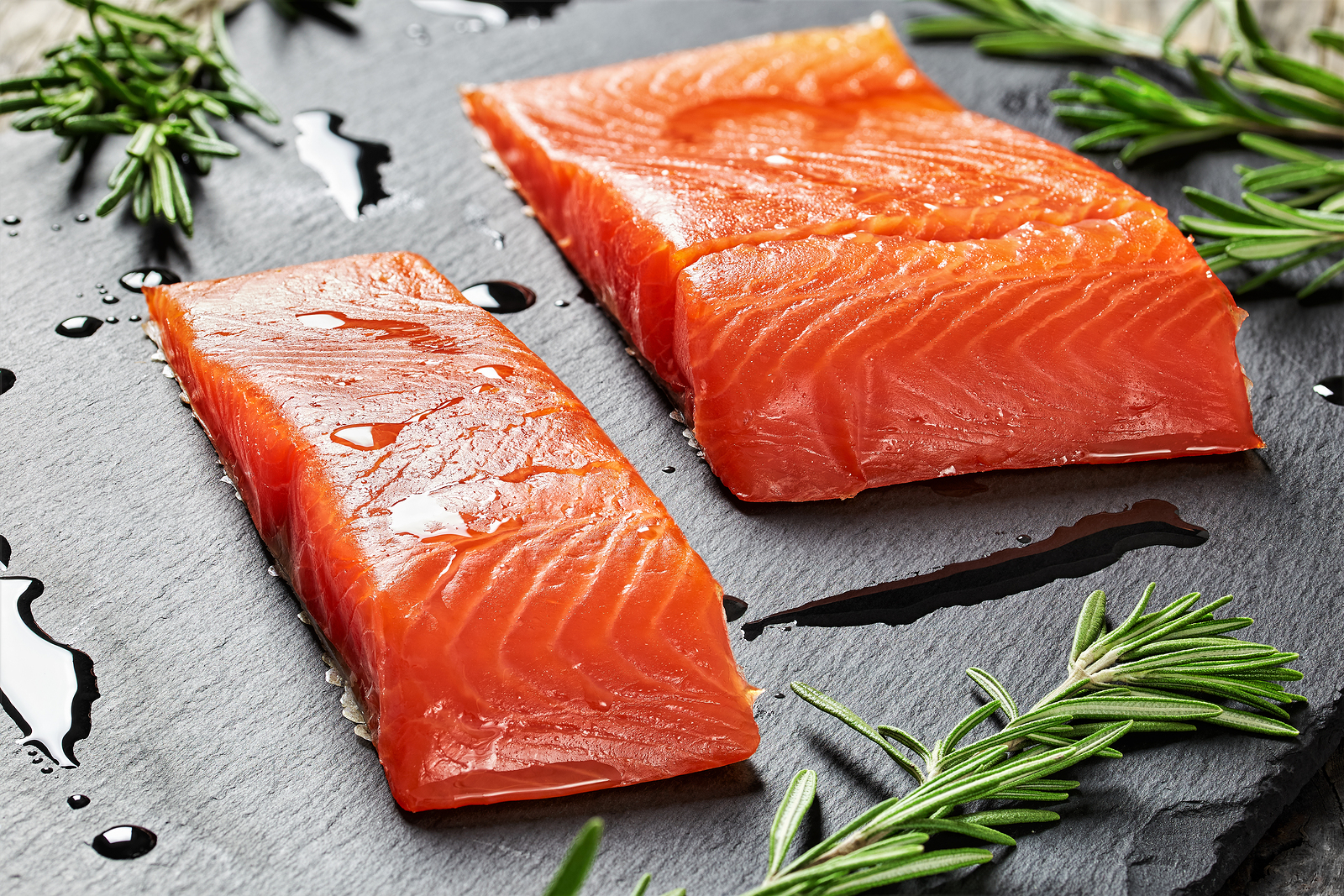This time of year you may be hearing more about turkey than seafood, but if you’ve been reading my newsletter for a while, you know how important eating fish can be to your health. Fish is a fantastic source of Omega-3’s, which impact heart health, brain health, mood, and so much more!
When I was growing up in Australia, fresh seafood was easy to come by. I could often be found eating raw oysters on the beach. We took the low calorie, high protein “brain food” for granted. Depending on where you live, fish may be abundant and inexpensive, or it may be hard to find and very costly.
Not only can cost be an issue, but we can’t always trust that our fish is as healthy as it used to be. With all the pollutants in the environment – especially our oceans – we may be getting more toxins than we bargained for when we choose to eat fish. And then there’s the problem of overfishing, which has led to the rise of aquaculture, or fish-farming.
Are farmed fish the solution to the problem, or can they open the door to even more health problems? We’ll take a close look at that in a moment, but first, let’s talk about the kinds of fish that might benefit you most.
Which Fish Are Best to Consume?
The answer to this question is complex enough that it would take another whole article to detail the research and reasons why some fish is better than others. Suffice it to say that the large fish that are often most popular, like tuna and swordfish, are much more susceptible to contamination.
Generally speaking, smaller fish are a better choice these days – but make sure to do some research before you make your choices. Tilapia, for example, is one of the most consumed fish in the US, but it offers low levels of Omega-3s and has been shown to have a detrimental impact on inflammation. Mackerel, sardines, and trout are all decent choices.
What About the Farmed vs. Wild Fish Debate?
One of the most debated topics when it comes to fish is whether farmed fish or wild fish is best. Environmentalists often lean towards farmed fish, since overfishing is a real problem that could upset the delicate balance of the ecosystems of lakes, rivers and oceans.
Farmed fish is also less expensive and easier to come by – but what does it do to your health? A lot of the fish you find in conventional supermarkets or on restaurant plates is farmed. The supply of wild caught fish can’t keep up with demand, and the industrial fish farming industry, like any big business, takes advantage of that demand.
You might not even realize you are choosing farmed fish, but there are a lot of good reasons to seek out wild fish instead. Let me share four of those with you now.
1. Wild Fish is Less Contaminated
Unfortunately, all fish comes with contamination risk. But studies have shown that farmed fish has higher contaminant levels than wild fish. Polychlorinated Biphenyls (PCBs) have been found at five to ten times higher levels in farmed fish. That’s a significant difference.
2. Wild Fish Won’t Contain Antibiotics
Antibiotics can be lifesaving, but overexposure can wreak havoc on your digestive system, killing off the good bacteria you need to thrive. Overexposure can also mean you develop a resistance, so they won’t work as intended when you really need them. Although the FDA has approved very few drugs for use in aquaculture, much of the farmed fish you find in supermarkets is imported from outside the US. Regulations elsewhere vary widely, and you might end up with fish that have been treated with antibiotics. Since antibiotics don’t occur naturally, there’s no risk of this when eating wild fish.
3. Wild Fish Contains Healthier Fat
Because fish farming is an industry, there’s pressure to get that fish to market. This means fattening up fish very quickly, instead of allowing them time to develop naturally. These farmed fish end up with a much higher fat content – and it’s not the kind you want! Yes, fish contains healthy fats, but much of this excess fat in farmed fish is saturated fats. In fact, farmed salmon has, on average, 20.5% more saturated fat than its wild counterpart. Contaminants are stored in fat, so the more fat there is, the more toxins might end up on your plate. That doesn’t sound so appealing, does it?
4. Wild Fish Fits Your Natural Diet
So many women are striving to cut out processed foods and eat more whole, natural foods. When you eat fish, you probably think that’s what you are doing – but stop for a minute to think about what that fish has eaten. Farmed fish are often fed genetically modified corn and soy. Others are fed fishmeal, which can accumulate chemicals like PCBs and dioxins. Wild fish aren’t immune to consuming contaminants due to pollution in lakes and oceans, but at least they, like you, are eating a natural diet.
Think You Don’t Like Fish? Try Something New!
Our personal tastes certainly impact what we eat, and I’ll let you in on a little secret – despite what I grew up loving, as I age, my tastes have changed. Sometimes, I find it difficult to eat the things I know will benefit me most. I used to love salmon, but now I have to consciously make myself eat it; it just doesn’t sound good to me anymore.
Sometimes, all you need is to try a new type of fish. And sometimes, a new recipe will do the trick. Recipes that incorporate tasty sauces and fresh vegetables make salmon easier for me to stomach. And since I know salmon is packed with Omega 3s that impact heart health, cognitive functioning, depression, brain development and healthy skin and hair, I have plenty of reasons to keep trying. It’s easier with recipes like the one I share below, from my book The Core Balance Diet.
Farmed Fish is Still Better Than No Fish
Although I’ll always choose wild over farmed fish when I can, I understand the barriers that can make wild fish hard to get. With the information we have available, it seems wise to steer clear of farmed fish whenever possible – but the benefits of eating any fish outweigh the risks of farmed fish, so don’t use that as an excuse to avoid fish altogether.
I know it can be tough to eat enough of the things we know are good for us. I live on the coast, and I still don’t eat enough fish! But every day is an opportunity for change, and now is as good a time as any to boost your fish consumption. I urge you to spend some time seeking out wild caught fish. It may take some work, and be a bit more expensive than farmed fish, but you are worth the investment! Now, how about that recipe I promised you? Click here to view the recipe!
Resources:
https://draxe.com/fish-you-should-never-eat/
https://www.mindbodygreen.com/0-11561/9-things-everyone-should-know-about-farmed-fish.html
http://www.cnn.com/2010/HEALTH/01/13/salmon.farmed.fresh/index.html
https://health.clevelandclinic.org/fish-faceoff-wild-salmon-vs-farmed-salmon/







